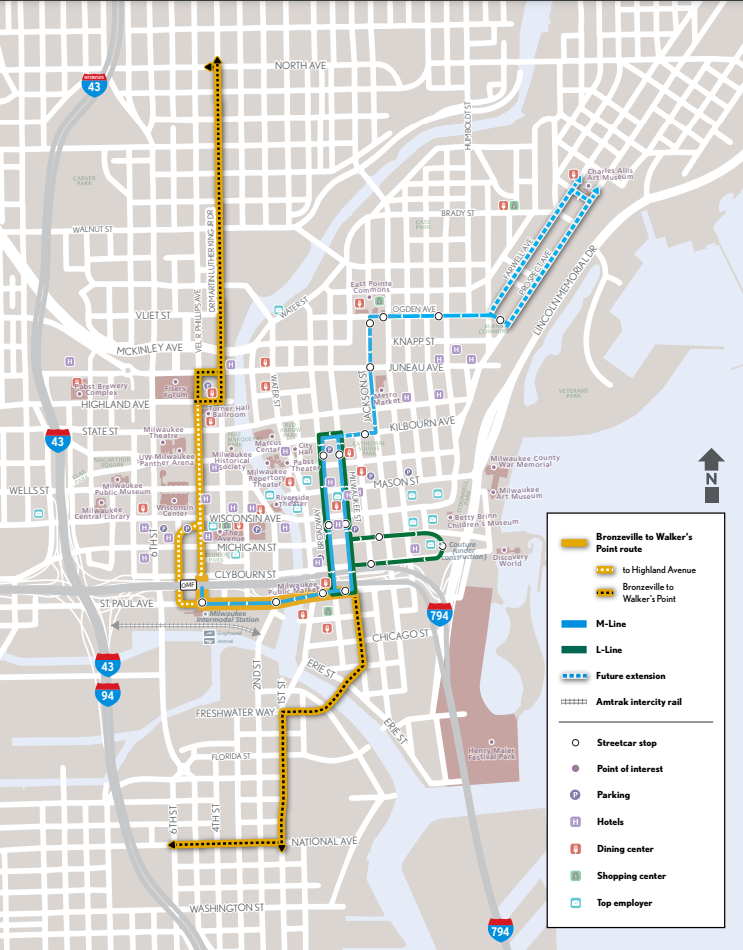The City of Milwaukee is moving forward with planning for four different streetcar extensions.
Although funding has become more complicated due to new state legislation, the city is hoping to secure federal funding for a $150 million extension of The Hop streetcar system north to Fiserv Forum and northeast to Brady Street at Farwell and Prospect Avenues.
Earlier this week, the Steering & Rules Committee directed the Department of Public Works to apply for a federal grant to fund the long-planned extensions. Additionally, DPW would begin the planning process for two other extensions, one to the Bronzeville district and one to the Walker’s Point neighborhood.
“This is basically a resolution that directs the commissioner (of the Department of Public Works) to pursue what we had intended to accomplish in 2011 and 2015,” said Alderman Robert Bauman, who represents the downtown area.
These stretches of the streetcar were first proposed almost a decade ago, but weren’t built because the city’s federal grant didn’t offer enough funding.
Now, the city is trying again seeking a different federal grant, hoping to get 70% of the cost covered from a Small Starts Grant as the bipartisan infrastructure bill has made more funding available.
That’s according to city engineer Kevin Muhs, who said the city would fare well in grant scoring for job density and jobs served by the extensions, but would need to mitigate other factors.
If the city secures the grant, it would still have to find a way to pay for about 30% of the capital costs.
“We have to find a new mechanism, which we will attempt to do.” Bauman said.

Historically, the streetcar system was funded through a combination of property taxes and tax incremental financing, among other funding streams. However, the recently-adopted state shared revenue law bars the city from using any property or sales tax revenues for streetcar expansion or operation.
An extension of The Hop to the lakefront is already funded and is set to start service this fall. The next extensions, to Fiserv Forum and to Brady Street, have already been studied and engineered, but are awaiting funding.
The resolution that passed Monday also asks DPW to begin “project development,” which includes engineering and other studies, for long-term extensions to North Avenue in Bronzeville via Dr. Martin Luther King Jr. Drive and to National Avenue in Walker’s Point.
Meanwhile, ridership of the streetcar’s existing 2.1-mile loop has not returned to pre-pandemic levels. Peaking in summer of 2019 with over 100,000 rides in July 2019, ridership fell to less than 20,000 rides per month for most of the pandemic.
While trending upward, ridership was only about 42,000 this May compared to about 63,000 in May 2019, ridership data shows.